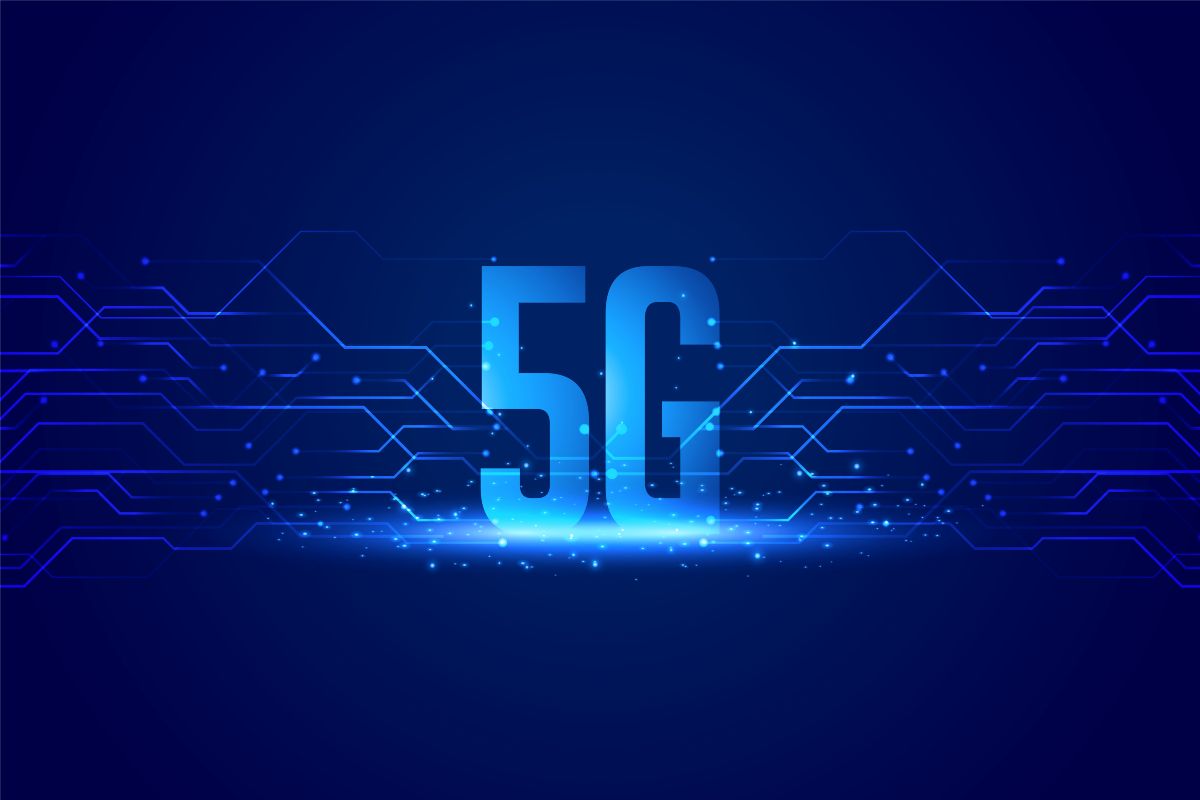The world of digital receiver technology is evolving at an unprecedented pace, revolutionizing industries from telecommunications to broadcasting. Whether you’re a tech enthusiast, an enterprise professional, or simply curious about the future of digital receivers, this guide will walk you through everything you need to know about this cutting-edge technology in 2025.
What Is Digital Receiver Technology?
Digital Receiver Technology uses digital methods to receive, decode, and process signals transmitted through satellite, cable, IPTV, and wireless networks. Unlike analog receivers, digital receivers offer enhanced clarity, better data integrity, and improved efficiency.
Digital receivers convert digital signals into audio, video, or data formats that devices like TVs, smartphones, and computers can easily interpret. With rapid technological advancements, modern digital receivers can handle high-definition content, internet-based broadcasting, and even AI-powered enhancements.
How Digital Receiver Technology Works
Digital receivers capture incoming signals transmitted over airwaves, cables, or IP networks. Once these signals are received, they are decoded and converted into usable data forms. The primary process involves:
- Signal Reception: The receiver captures digital signals from the source, whether it’s satellite, cable, or an internet-based provider.
- Decoding: The digital signal is decoded using specific protocols and algorithms to extract the intended content.
- Conversion: The decoded data is converted into audio, video, or textual formats.
- Output: The final output is delivered to end-user devices such as televisions, smartphones, or computers.
To ensure reliable data transmission and reception, digital receivers utilize advanced technologies, such as error correction, modulation, and encoding techniques.
Types of Digital Receiver Technologies
Digital receiver technology is diverse, catering to various needs and applications. Below are the most common types:
1. Satellite Digital Receivers
These receivers capture signals transmitted by satellites orbiting the Earth. They are commonly used for television broadcasting and data communication, offering broad coverage and high-quality reception.
2. Cable Digital Receivers
Cable digital receivers receive digital signals by connecting to coaxial or fiber-optic cables. They are popular in urban areas where high-speed broadband and TV services are delivered through physical wires.
3. IPTV Digital Receivers
Internet Protocol Television (IPTV) receivers receive digital signals over the Internet. These devices provide a more flexible, on-demand viewing experience than traditional broadcast methods.
4. Wireless Digital Receivers
Wireless receivers capture signals transmitted through radio frequencies or Wi-Fi networks. They are crucial for applications like mobile communication, smart home devices, and remote monitoring systems.
Key Features and Specifications of Digital Receivers
Advanced features will characterize the digital receiver market in 2025 to improve performance and user experience. Some key features include:
- High-Definition (HD) and Ultra HD (UHD) Support
- AI-Enhanced Signal Processing
- Multi-Device Compatibility
- 5G Integration for Enhanced Connectivity
- Low Latency Performance
- Energy Efficiency
- Cloud-Based Storage and Processing Capabilities
- Enhanced Security Protocols
Applications of Digital Receiver Technology
Digital receiver technology powers many of the wireless and wired systems we use every day. These receivers convert incoming signals into meaningful data, enabling clear communication, accurate control, and reliable connectivity. Below are some of the most important real-world applications.
Broadcasting
Digital receivers are essential in modern television, radio, and internet-based broadcasting. They decode digital signals to deliver clear audio and high-quality video to viewers and listeners. This technology also supports features like on-demand content, interactive services, and improved signal stability compared to older analog systems.
Telecommunications
Mobile networks, broadband connections, and VoIP services all depend on digital receivers for stable communication. These receivers handle voice, video, and data signals, ensuring they are transmitted and received with minimal errors. As networks evolve to 4G, 5G, and beyond, digital receiver performance becomes even more critical for speed and reliability.
IoT Devices
Smart home devices, wearables, and industrial sensors all rely on wireless digital receivers to stay connected. These receivers allow IoT gadgets to communicate with each other and with cloud platforms in real time. This connectivity enables automation, remote control, and data collection across a wide range of applications.
Remote Sensing and Surveillance
In military, security, and industrial environments, digital receivers are used for monitoring and data acquisition. They capture signals from sensors, cameras, drones, and radar systems to provide accurate situational awareness. High-quality digital reception helps improve detection, tracking, and analysis in critical operations.
Navigation Systems
Sensitive digital receivers drive GPS and other navigation technologies. These receivers process weak satellite signals and convert them into accurate position, speed, and timing information. From smartphones and cars to aircraft and ships, reliable digital reception is key to precise and safe navigation.
Latest Trends and Innovations
As of 2025, digital receiver technology is evolving rapidly, driven by advancements in connectivity, security, and miniaturization. Modern receivers are becoming more intelligent and more adaptive, thanks to the integration of artificial intelligence and next-generation wireless networks. These innovations are pushing the boundaries of efficiency, performance, and user experience.
Integration of AI for Signal Optimization
Artificial intelligence is increasingly being built into digital receivers to enhance signal quality automatically. AI algorithms can analyze interference, adjust tuning parameters, and optimize bandwidth usage in real time. This leads to more stable connections and improved performance across various environments.
Adoption of Quantum-Resistant Encryption
With the rise of quantum computing, digital receivers are adopting encryption methods designed to withstand next-generation cyber threats. Quantum-resistant protocols ensure secure communication channels, protecting sensitive data transmitted across networks. This shift is essential for both consumer and military-grade systems.
Enhanced Compatibility with 5G and Beyond
Digital receivers are now designed to support high-speed 5G networks and emerging 6G technologies. This allows them to handle ultra-low latency communication and high-bandwidth content with ease. As network infrastructure expands, receivers will continue to evolve to match new wireless standards.
Compact and Portable Designs
Advancements in microelectronics have enabled the creation of smaller, lighter, and more efficient digital receivers. These portable models are ideal for IoT devices, wearables, drones, and field communication systems. Despite their size, they offer performance comparable to full-size equipment.
Focus on Eco-Friendly, Energy-Efficient Devices
Sustainability is becoming a major priority, with manufacturers developing energy-efficient receiver components. These devices consume less power, generate less heat, and last longer while reducing environmental impact. Eco-friendly materials and recyclable components are also gaining importance.
Advantages of Digital Receiver Technology
Digital receiver technology plays a crucial role in modern broadcasting, communication, and data transmission. Its benefits have reshaped how we consume media and interact with connected devices. Below are the key advantages that make digital receivers superior to traditional analog systems.
Superior Signal Clarity and Quality
Digital receivers offer clearer audio, sharper video, and reduced noise interference compared to analog systems. They process signals with higher precision, ensuring consistent quality even in challenging conditions. This allows for more immersive viewing and listening experiences.
Enhanced Security
Advanced encryption protocols protect digital signals from unauthorized access and tampering. Whether used in broadcasting, telecommunications, or navigation, secure digital reception ensures data privacy. These security features are crucial for government, military, and corporate applications.
Wider Bandwidth for High-Definition Content
Digital technology supports wider bandwidth, enabling receivers to handle high-definition and even ultra-high-definition content. This opens the door for smoother streaming, richer media quality, and advanced interactive services. It’s a key factor driving modern multimedia platforms.
Flexibility and Cross-Device Compatibility
Digital receivers are highly versatile and compatible with a wide range of devices, from TVs and smartphones to IoT sensors and industrial systems. Their adaptability makes integration across different platforms easier. This flexibility supports seamless user experiences in connected environments.
Cost-Effectiveness
Modern digital receiver designs often require fewer hardware components, reducing manufacturing and maintenance costs. Software-based processing also allows for easier updates and improvements. Over time, this lowers overall system expenses for both producers and consumers.
Challenges and Limitations
Despite their many benefits, digital receivers still face technical and practical challenges. As connectivity demands increase, these limitations highlight areas for future innovation and improvement.
Compatibility with Older Devices
Not all older hardware is designed to support modern digital receiver technology. This leads to issues in mixed environments where legacy equipment is still in use. Upgrading systems can be costly and time-consuming for specific industries.
Vulnerability to Cyberattacks
Although secure, digital systems remain vulnerable to hacking and digital interference. Unsecured networks or outdated firmware can expose receivers to malicious attacks. Continuous updates and strong security protocols are essential to mitigate these risks.
High Cost of Advanced Equipment
Cutting-edge digital receivers with AI and 5G capabilities can be expensive. Industries that require high-precision or mission-critical equipment may face significant investment challenges. Over time, costs are expected to decrease as technology becomes mainstream.
Dependency on Internet Infrastructure
IPTV, VoIP, and cloud-based communication systems rely heavily on strong internet connectivity. In areas with weak or unstable networks, digital receivers may not perform at their full potential. This dependency remains a significant limitation for remote or underserved regions.
Future Outlook
The future of digital receiver technology looks promising, with continuous innovations focused on enhancing signal quality, compatibility, and security. As AI and 5G technologies mature, digital receivers are expected to become even more efficient, adaptable, and user-friendly.
Conclusion
Digital receiver technology is integral to our connected world, providing the backbone for seamless communication and entertainment. With ongoing advancements in AI, 5G, and security protocols, the potential of digital receivers is virtually limitless. Stay tuned as this fascinating technology continues to evolve in the years to come.
Frequently Asked Questions (FAQs)
1. What makes digital receiver technology better than analog receivers?
Digital receiver technology provides superior signal clarity, improved efficiency, and higher data integrity compared to analog systems. It also supports HD and UHD formats, AI-powered processing, and seamless 5G integration.
2. How does a digital receiver process signals?
A digital receiver captures signals through satellite, cable, or IP networks, decodes them using algorithms, converts them into usable data (audio, video, or text), and delivers them to end-user devices like TVs or smartphones.
3. Can digital receivers work with 5G and AI technologies?
Yes, modern digital receivers in 2025 are designed for 5G connectivity and AI-powered signal optimization, ensuring faster transmission, minimal latency, and smarter data processing.
4. What are the main applications of digital receiver technology?
Digital receivers are used in broadcasting, telecommunications, IoT devices, GPS navigation, and surveillance systems — essentially in any technology that requires reliable signal transmission and decoding.
5. What is the future of digital receiver technology?
The future of digital receivers lies in the integration of AI, quantum-safe encryption, and eco-friendly designs. As 5G evolves, these devices will become more compact, secure, and efficient for global connectivity.[/vc_column_text][/vc_column][/vc_row]














